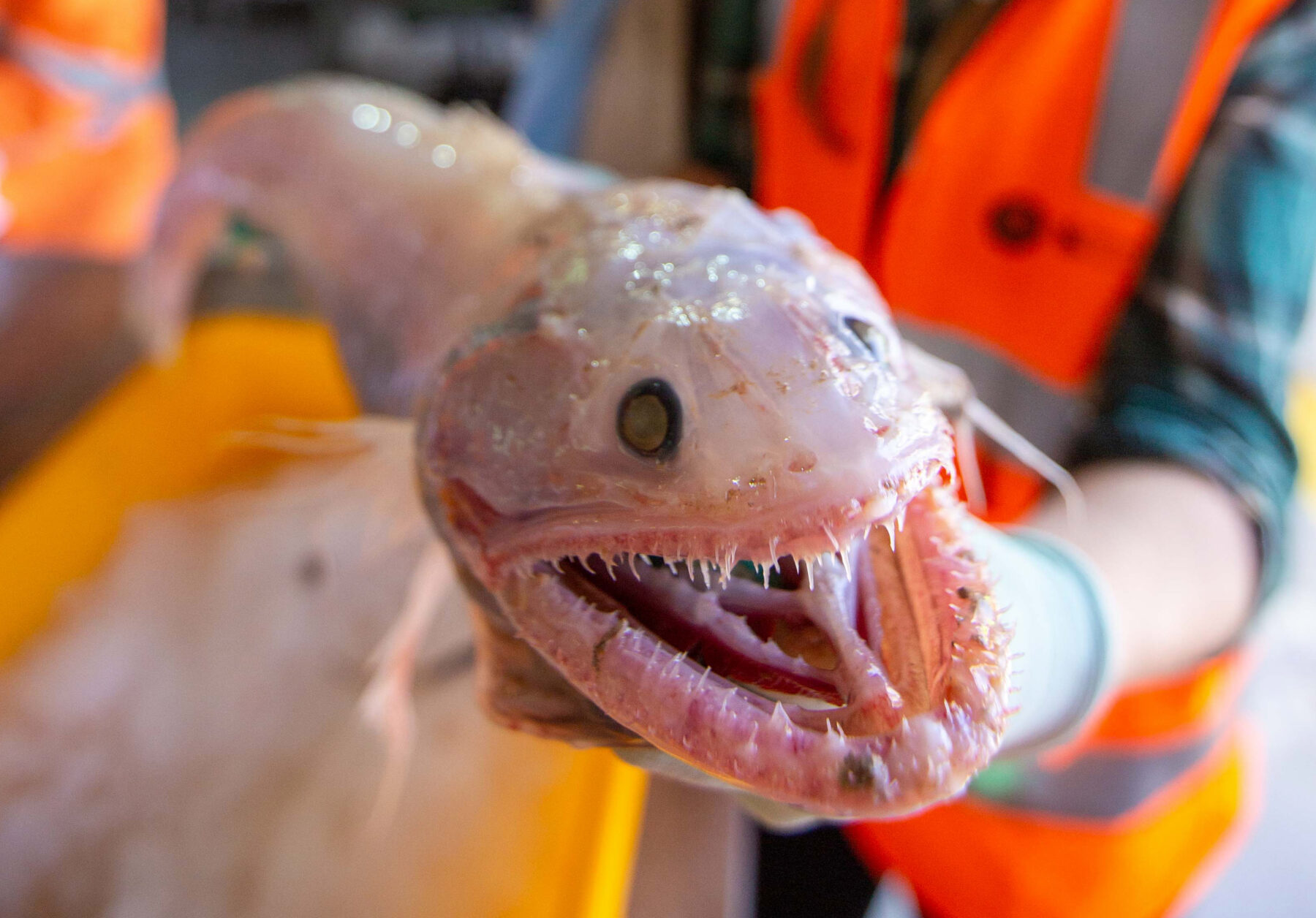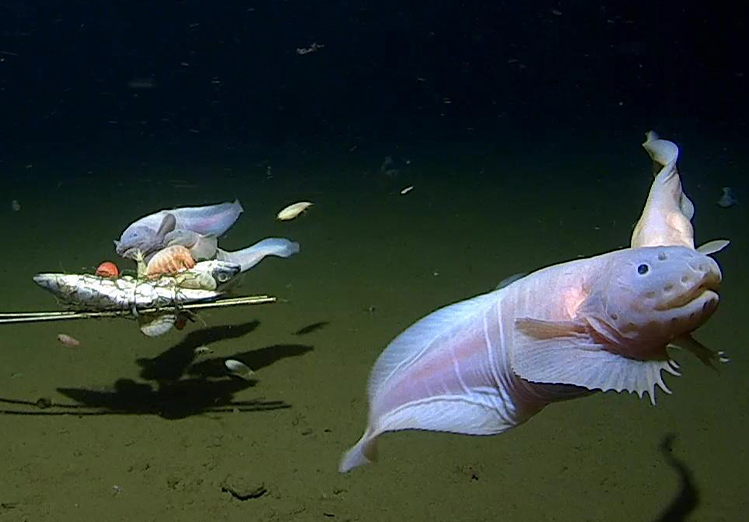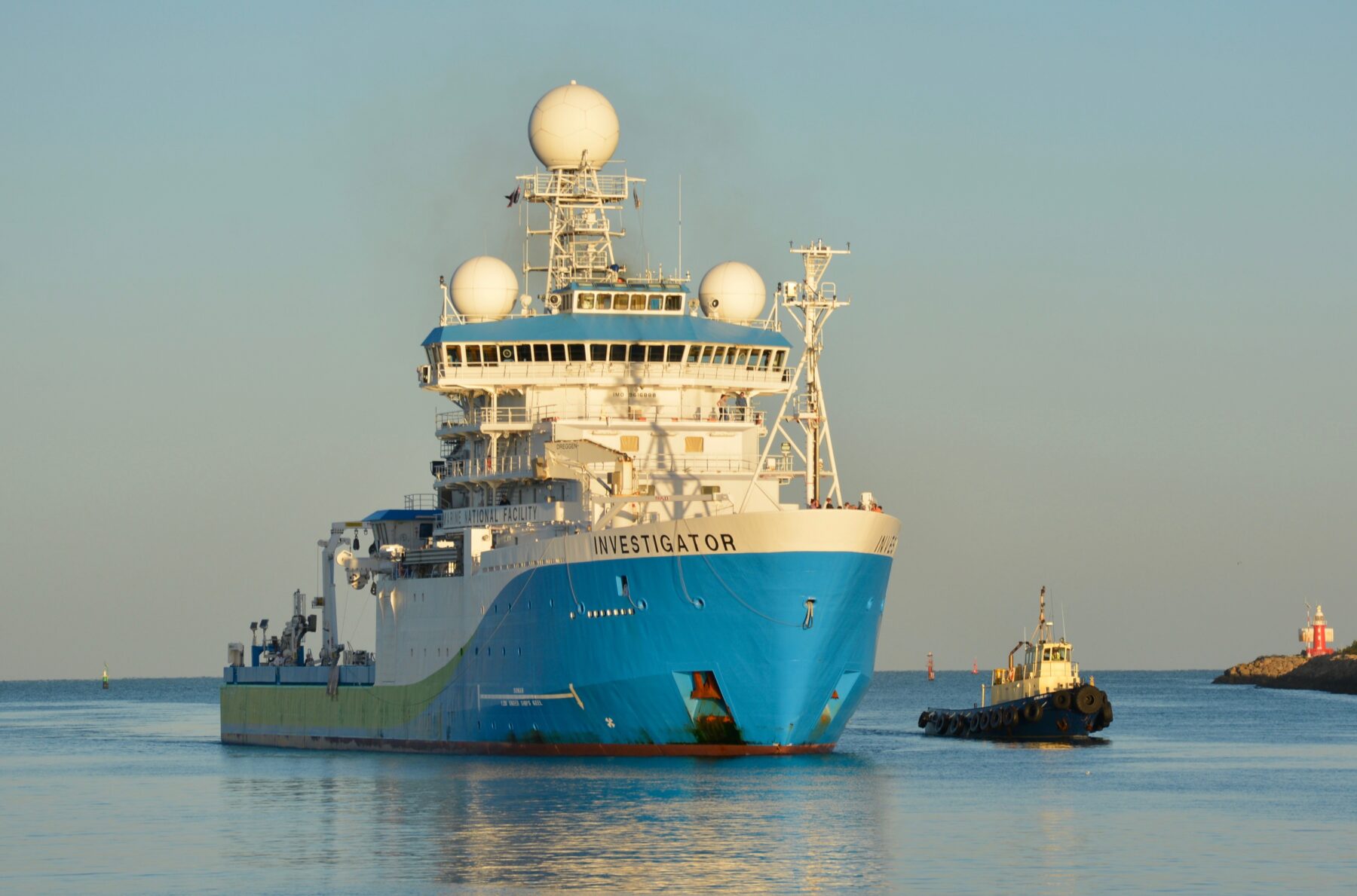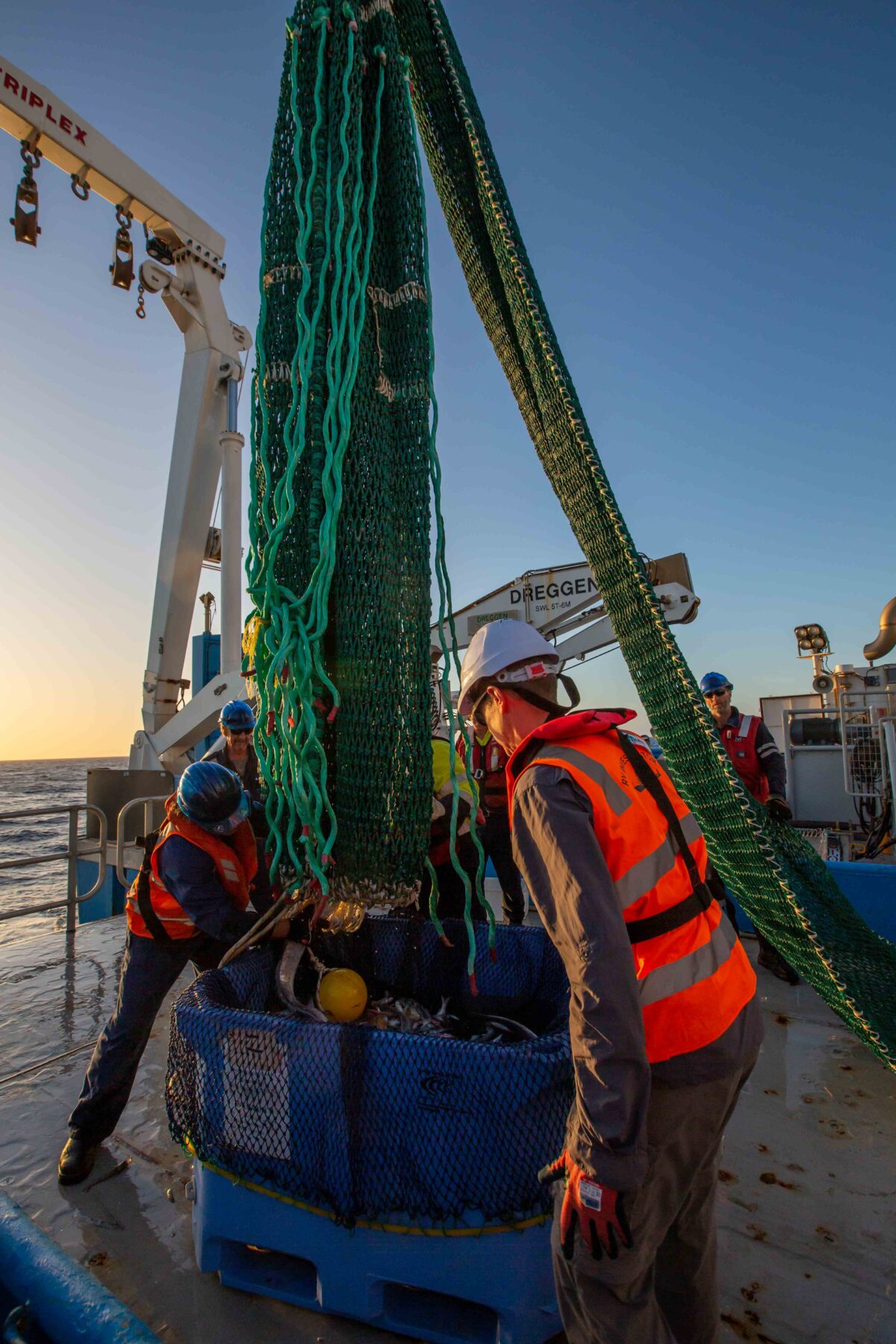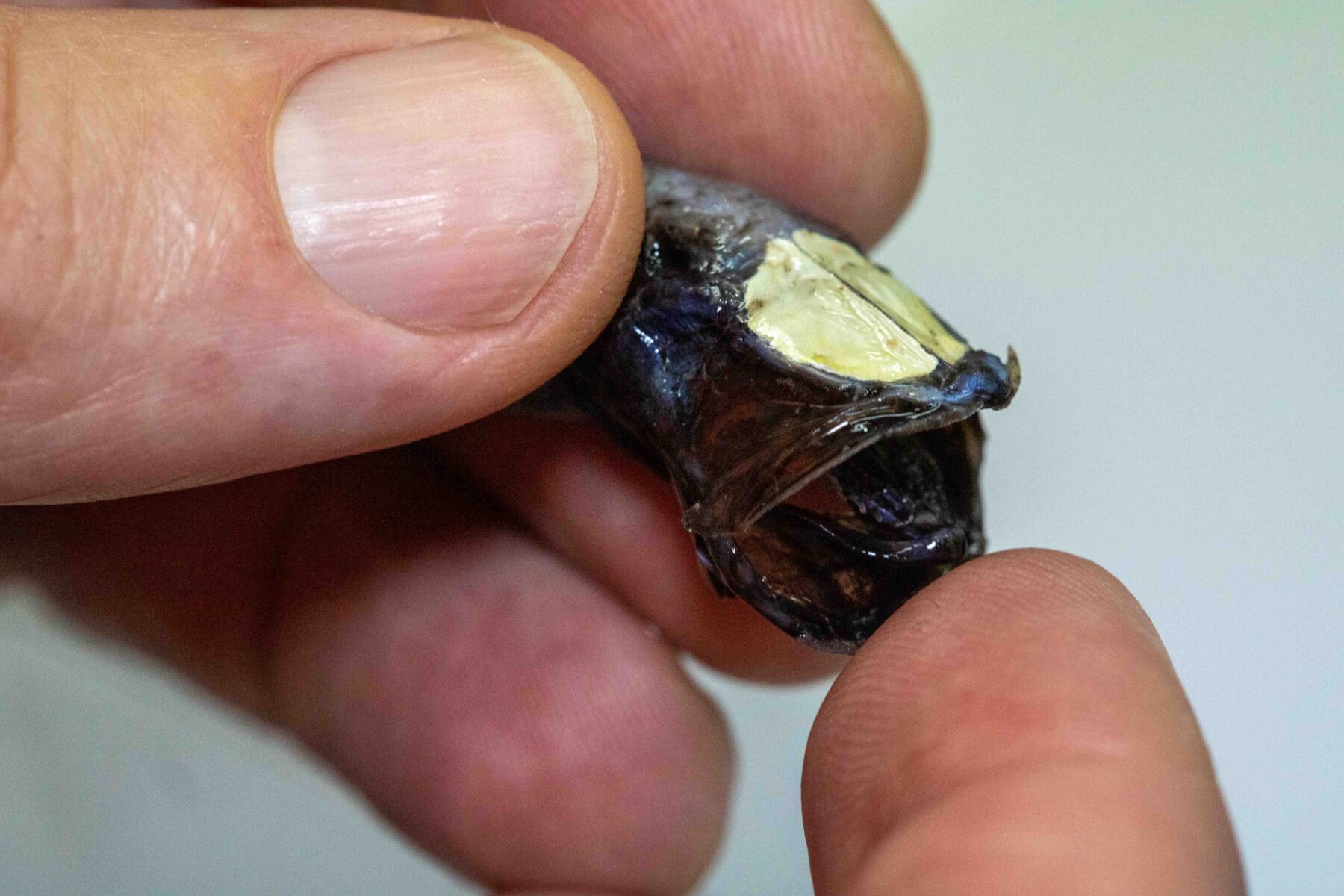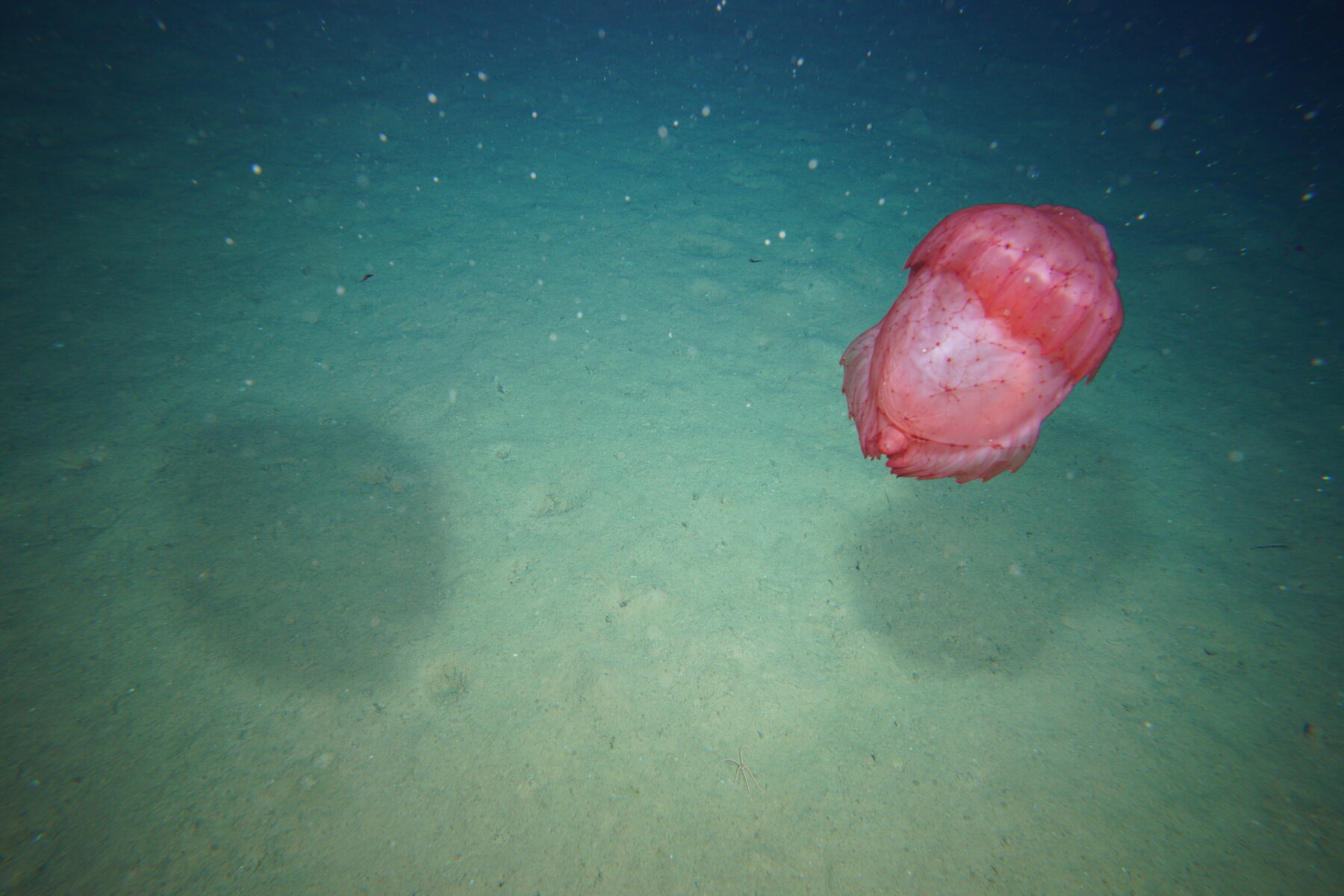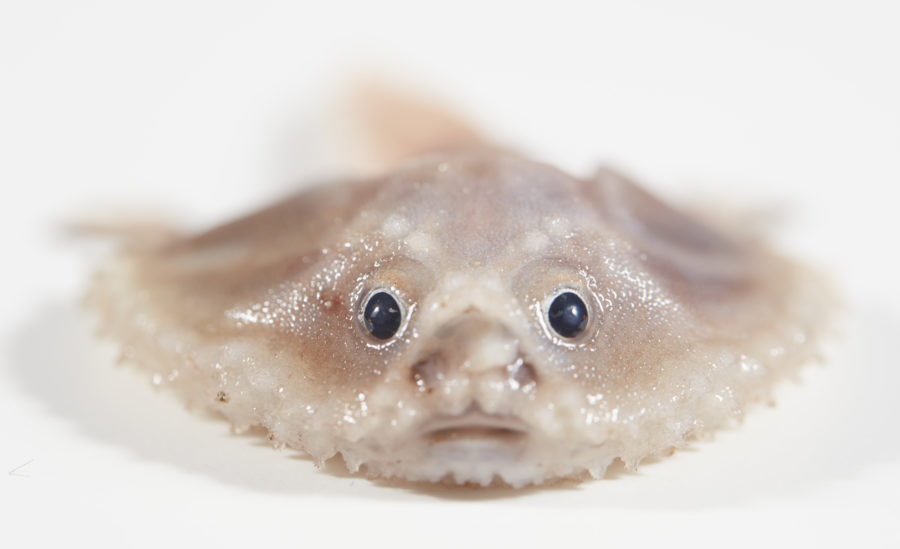After spending a month on the Indian Ocean, the CSIRO research vessel RV Investigator returned to Fremantle Harbour just before Christmas last year, with some of the strangest creatures on board that have ever been found off Western Australia’s coast.
Safe below deck were carefully preserved specimens of a blind, fuchsia-pink, 50cm-long scampi; dark-purple sea urchins that sparkled with iridescent blue light; and translucent, white-fleshed squid exquisitely studded with multi‑coloured shining “jewels”. There were bizarre tiny sponges, just centimetres long, that grew 2m-long rods of silica; dumbo octopuses that, as their common name suggests, soared mid‑water like flying characters from a Disney animation; carnivorous glass scallops; swimming purple sea cucumbers the size of footballs and others that looked like they were wearing shaggy lion’s manes; bug‑eyed, deep-dwelling, bright red prawns; and batfish, goosefish, and tripod fish, many of which were festooned with huge alienesque parasites.

Also on board were 35 exhausted researchers and 20 crew, who’d spent the previous 31 days together in close quarters working around the clock on 12‑hour shifts. They were documenting as much biodiversity as they could, from 50m down to 5000m, in Gascoyne Australian Marine Park, one of the newer and larger parks. Supported by a federal Our Marine Parks grant, the investigation – a joint operation between CSIRO and the WA Museum, with scientists also from the Tasmanian Museum and Art Gallery and Museum of New Zealand Te Papa Tongarewam – was the first to explore so deeply off the WA coast.
Deep sea begins, by most definitions, at about 200m below the ocean’s surface, which is where most of the light from the sun has been filtered out. It’s our planet’s largest habitat, by far. And yet it’s as uncharted as space and almost as challenging to explore. “Earth’s last frontier” is how CSIRO marine ecologist Dr John Keesing, the Gascoyne expedition’s chief scientist, describes the deep sea.
It’s a place where no sunlight reaches and the pressure of the overlying water is truly immense. Those characteristics hugely shape life here. But it also means that even basic biological sampling requires a very high‑tech, tailored approach. While Australia’s coastal and shallow‑water habitats have been reasonably well explored, much of our deep‑sea habitat – and there’s a lot of it (see below) – has gone unexplored and undocumented.
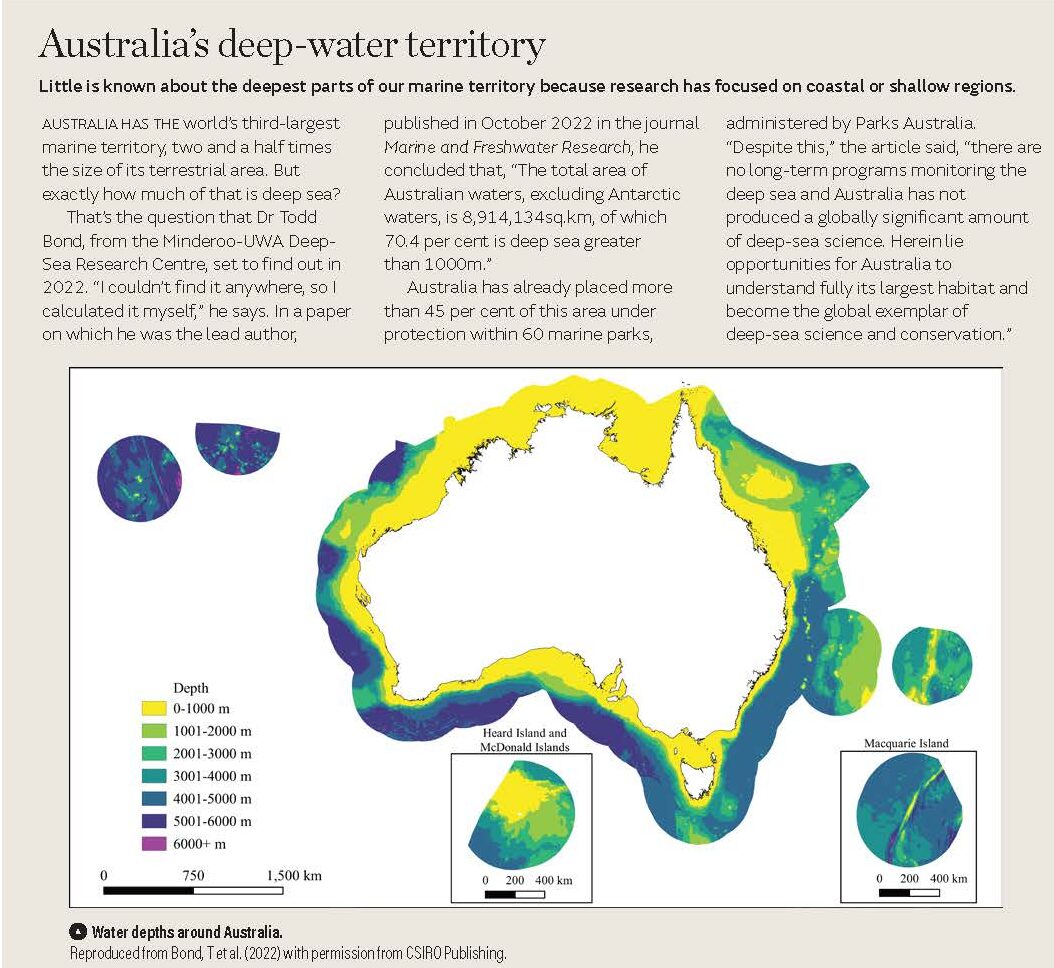
Enter the RV Investigator. The $120 million, 94m-long, purpose-built research vessel is a high-tech, ocean-going aquatic science powerhouse and part of Australia’s Marine National Facility. It’s owned and operated by CSIRO, Australia’s national science agency, which manages a competitive program to award fully funded grants of sea time to various research partnerships for research of national benefit. Since the RV Investigator was commissioned in 2014, the nation’s capacity for deep-sea research has skyrocketed, and scientists have been gradually garnering a better understanding of what’s beyond the coast in waters under Australia’s jurisdiction.
Pulling together the sort of multi‑disciplinary, multi-organisational team required for a deep-sea research voyage usually takes more than 18 months. Complications and delays caused by COVID meant that it took almost three years for the Gascoyne expedition to finally get in the water late last year.
“The purpose of the expedition was to try and capture both imagery and specimens of the biodiversity as deep as we could go,” John says. “We were able to use sampling equipment, mostly small trawl nets, down as deep as 5000m.” But cameras were restricted to slightly shallower depths. “The deep-water tow camera had a depth limitation of 3900m, so the deepest we were able to capture imagery was almost 4000m. That camera was towed at a couple of metres above the bottom, which is quite a feat in itself,” he says.
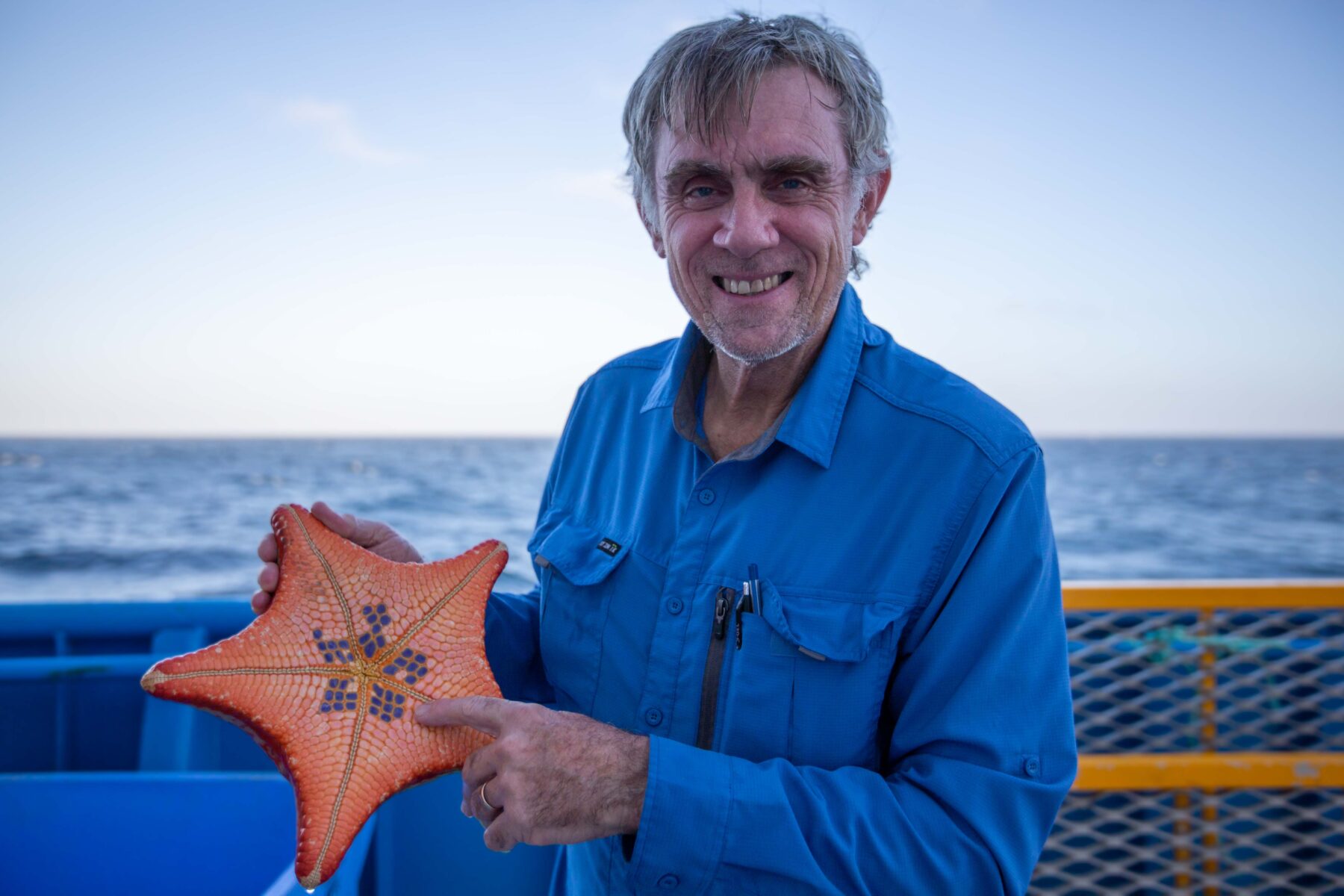
To reach a depth of 4000m, a camera requires about 4500m of cable. Trawl nets towed at more than 5000m deep required even more cable, as much as 6500m of the 8000m carried by the ship. The purpose of the deep-sea camera, of course, is to capture vision of deep-sea habitats and what’s living there. But it also sends live imagery back to the scientists and crew to indicate where trawl nets should be dropped and what places should be sampled.
The presence of animals can also now be detected, even if they can’t be seen, by testing for molecules of their DNA in water samples. And so a device attached to the deep-sea camera meant that environmental (eDNA) samples were being gathered constantly on the expedition. “The eDNA sampling picks up fragments of DNA shed by animals that occur in the area but may not be seen by our cameras caught in our nets,” explains CSIRO marine ecologist Dr Cindy Bessey, who has a particular interest in marine food chains. “And that helps also to give a much better picture of what’s down there.”
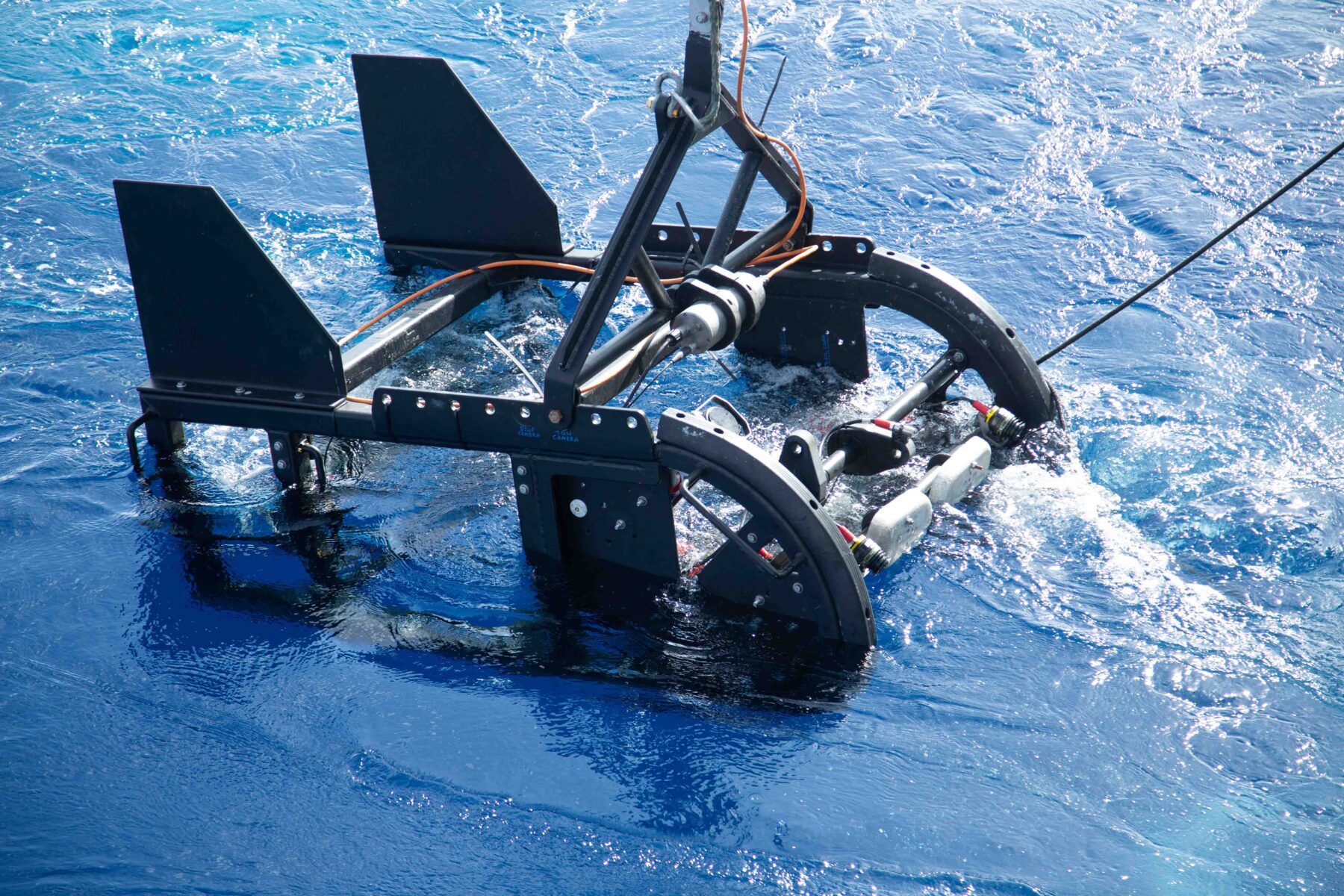
Deep-sea discoveries made so far from sampling in the Gascoyne have elated the scientific staff who joined the expedition. For the WA Museum’s head of aquatic zoology, Dr Lisa Kirkendale, one of the voyage’s spectacular finds was a “slit” shell. Her particular expertise is in molluscs, which includes creatures that produce their own shells, notably bivalves and gastropods such as snails. Slit shells are ancient gastropods that evolved about 500 million years ago, and, at various times in the distant geological past, they were a dominant life form of shallow intertidal habitats. The few surviving modern species are all deep‑sea dwellers and are particularly rare in the Indian Ocean.
“But we found one! Just one individual, but it’s an enormous shell the size of two fists,” Lisa says, explaining that it was brought up live from a depth of about 400m. “It was the first time I’d seen a live slit shell, and for me it was like a finding a unicorn!”
A huge variety of carrier shells – a group of sea snails that live on sandy bottoms, down to about 1400m – was another deep‑sea shell highlight from the Gascoyne for Lisa. “Individuals select different items from the sea floor, like bits of dead shell and coral, and attach them to their own shell,” she explains. “It’s not clear why they do it but there are multiple hypotheses – it might be to do with giving them an increase in surface area to prevent sinking in soft sediments, or for camouflage to avoid predation, or both.”
Lisa is also fascinated by the minutiae of life at great depths. “Bringing sediment and shell hash from the deepest places we sampled, near 5000m, we’d come up with an abundance of bivalves, many that were just centimetres or less in size – tiny molluscs – and the diversity of different species and forms was extraordinary,” she says. “What’s particularly interesting is that many were predatory, which is not a usual life habit for many clams that rely on filter-feeding in shallow waters. At great depths particulate matter is sparse, so the feeding repertoire has been expanded to include a rarer feeding strategy, active predation on small crustaceans.”
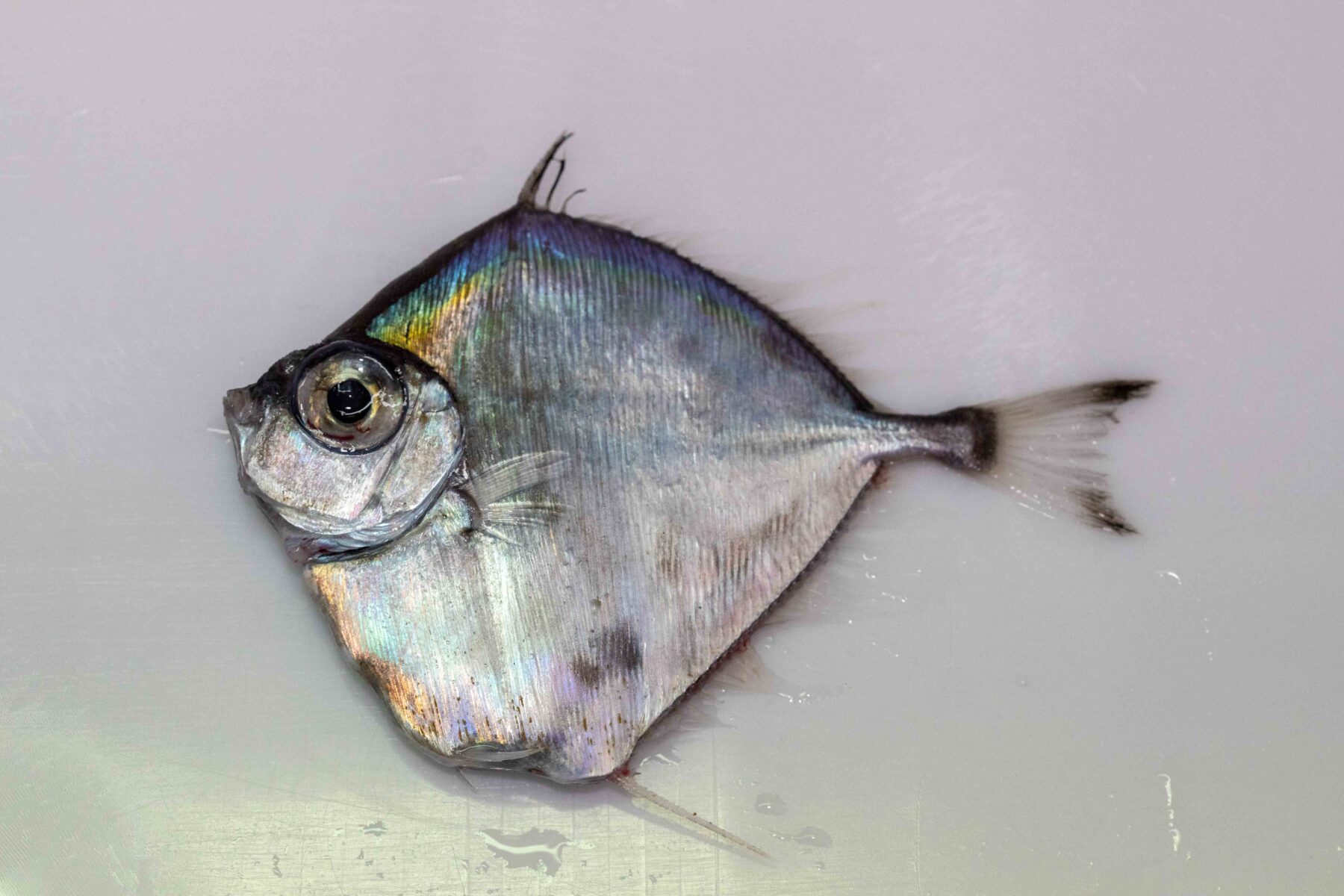
Like deep-sea clams, many deep-sea sponges are also predatory and the delicate white glass sponges observed on the towed video are also deadly. The feeding behaviour is especially interesting, given that sponges are attached to the bottom and you typically associate “predator” with “ability to move unencumbered”, so this mode of food capture is not intuitive for this animal. On the sandy, silty deep-sea bottom, persistent hard substrates are at a premium so anything firm – such as the spicules of silica these sponges produce, 2m-plus in length – is settled on by any creature looking for a permanent home. “It’s very odd for the average person to imagine a sponge, which doesn’t even look alive and that most people don’t even realise is an animal, capturing active prey. And I think the same goes for a simple clam or mussel: you just don’t expect them to be killers,” Lisa says.
The underwater videos captured by the expedition confirm that much of the deep sea looks empty of large life forms, but wherever there was a hard substrate it was seething with invertebrate life. “Anywhere that created a hard substrate became like an oasis on the sea floor – meccas for animals – just like in a desert,” she says.

As deep-sea camera technology improves, these expeditions provide increased opportunities to document animal behaviours not seen before. For Dr Andrew Hosie, WA Museum’s curator of crustaceans and worms, who’s now been involved in several deep-sea expeditions and has a particular interest in crustaceans, witnessing the behaviour of a deep-sea scampi species on this trip was a particular high point.
Scampi is the common name given to crustaceans that are somewhere between prawns and lobsters. “We picked up one from about 1500m deep and it came up perfectly intact, and was bigger that any lobster you might pick up in a seafood shop – 50–60cm long – and a spectacular fuchsia pink in colour,” Andrew says. “This species is blind and has very reduced eye stalks and hasn’t been known before from this part of the Indian Ocean. There’s a possibility it could be a new species, but at this stage the species we are currently calling it is found from Africa through to Hawaii and is always deep-sea.”
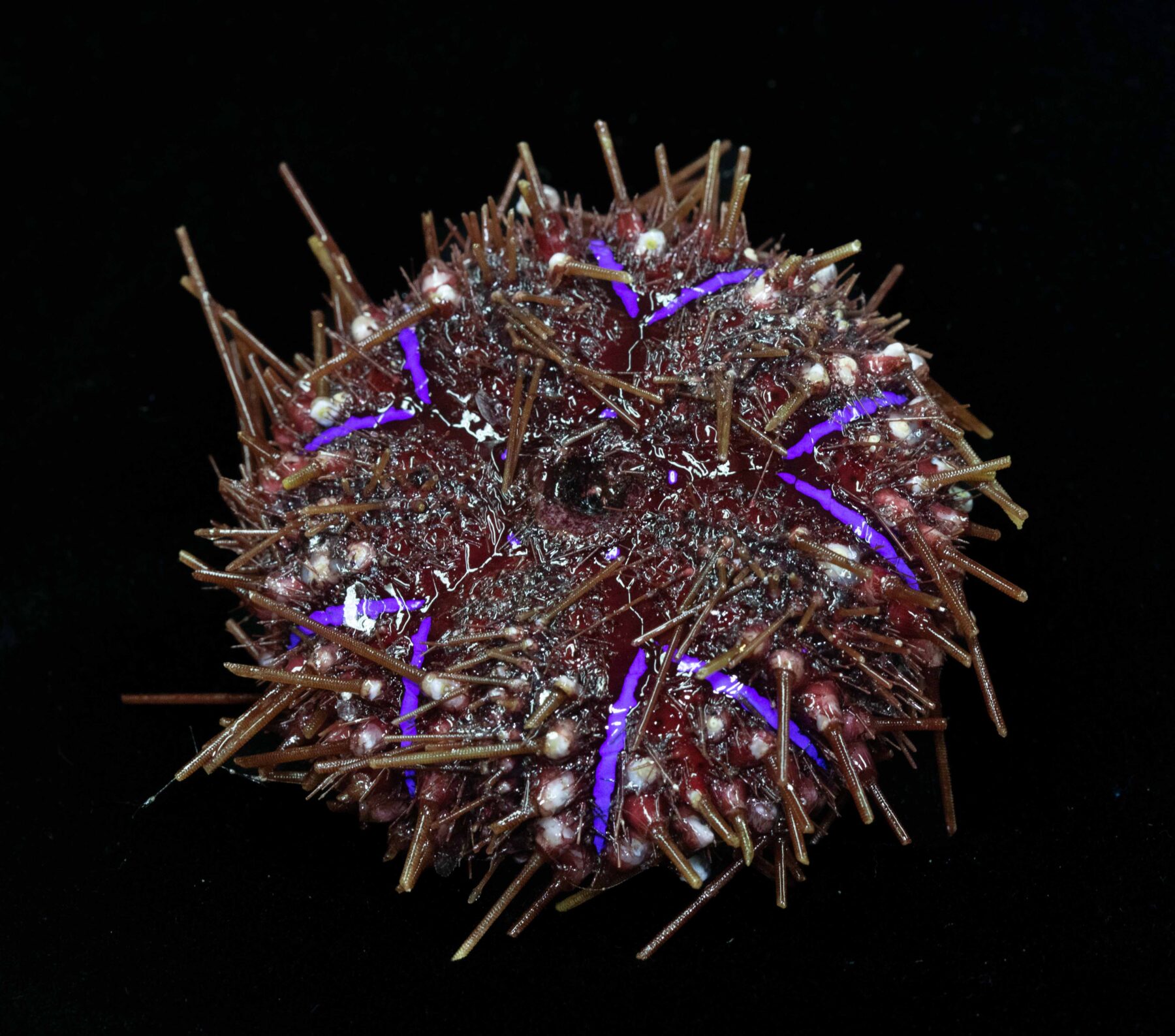
What’s even more exciting is that the expedition captured footage of one of these animals sitting in a burrow with its claws out and its antennae at attention, as if waiting to ambush any soft‑bodied animal that might pass. “It’s sitting at the burrow, and you can clearly see its head, claws and a couple of legs, but you can also see other exit points, as well as what looks to be a main entrance,” Andrew says. “And so it’s actually constructed quite a complex burrow…not just a simple hole. And one weird thing was that dotted around this burrow complex were squat lobsters – smaller crustaceans that look like a cross between a crab and a lobster.” It’s possible they have some sort of complex symbiotic relationship with the scampi, using its burrow for shelter and perhaps removing parasites from the larger crustacean in return.
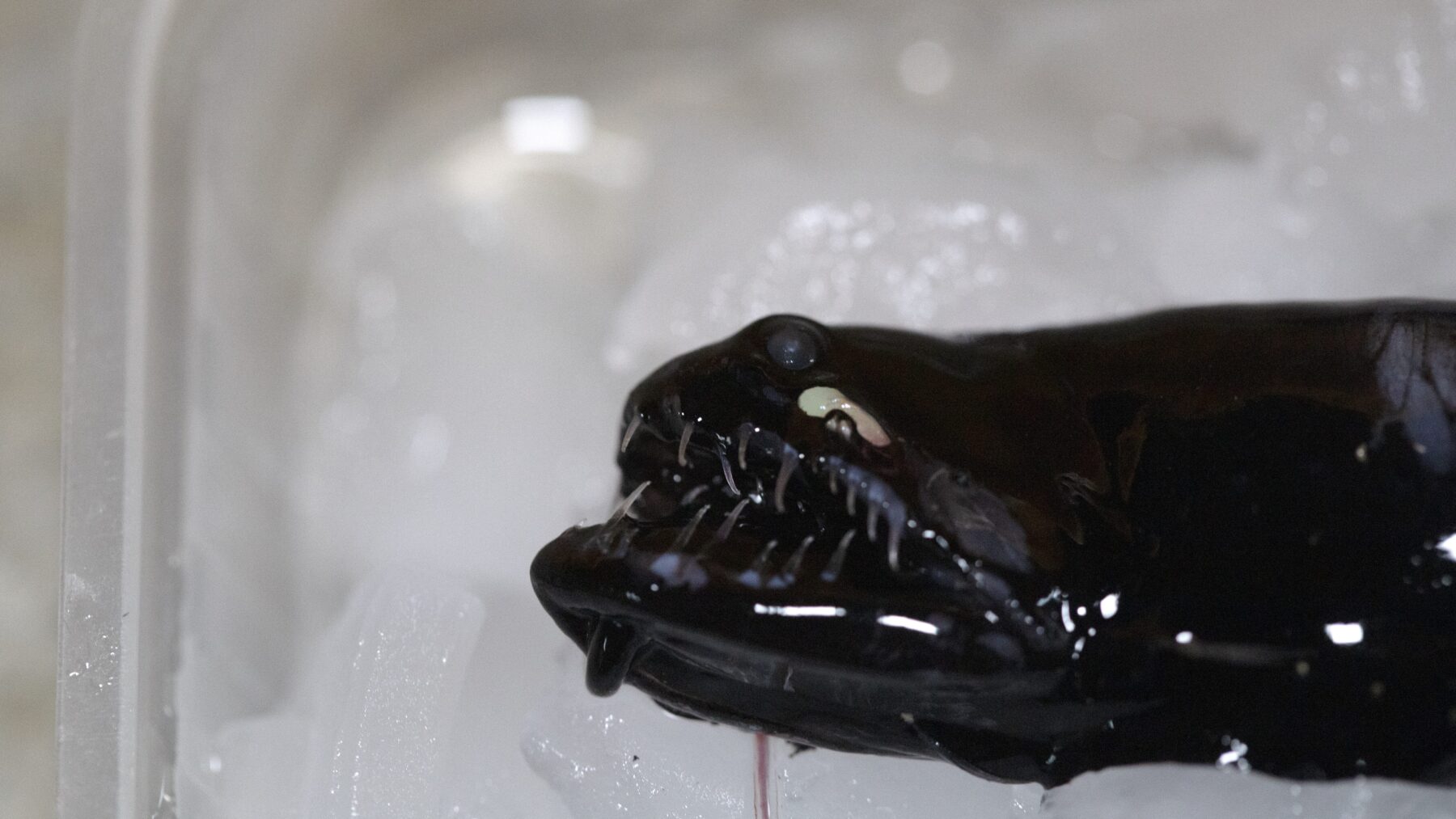
A lot of deep-sea crustaceans are adapted to parasitise fish; however, they often fall off their hosts as they’re brought up in trawls. “But there was a tripod fish that came up with a crustacean, about 3cm long, called an amphipod, still attached,” Andrew notes. “This one had its first couple of legs adapted for clinging, so it was clamped onto the fish like a kind of carabiner clip, while its other legs were skinny and not attached. It was really quite weird and looked like an alien and I hadn’t seen it before. Getting some of these associations was really quite precious.”
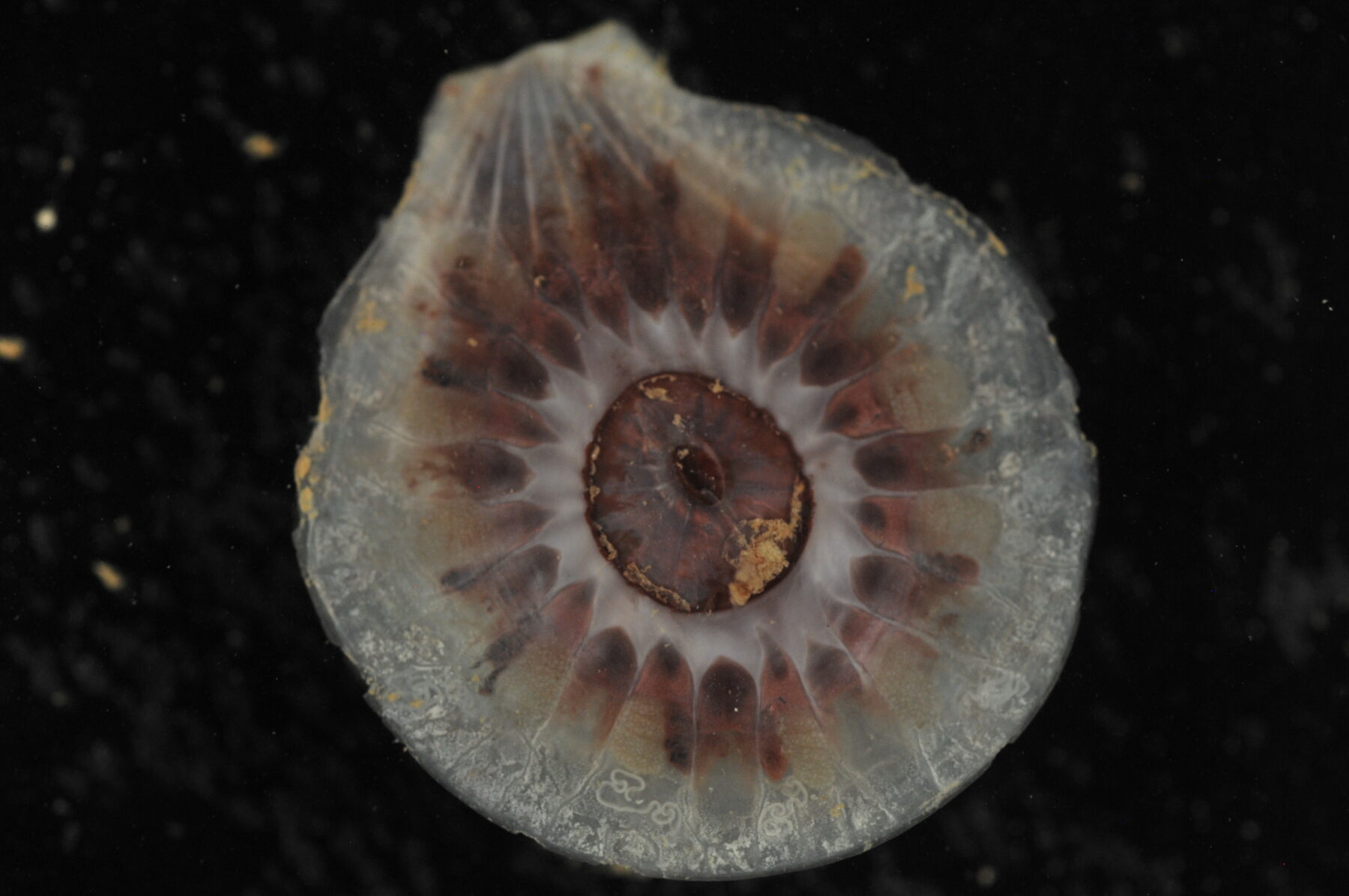
Behaviours and associations between animals revealed on the Gascoyne expedition were also unexpected insights for CSIRO marine ecologist Dr Candice Untiedt. She was responsible for analysing the video footage as it came in and helping to characterise the habitats and fauna that were being seen. Candice has previously joined deep-sea expeditions off the east coast, notably exploring seamount regions off Tasmania, but this was her first west coast deep-sea voyage. “For me, the most extraordinary thing was that in the Gascoyne you get a lot of sediment and you think such places are going to be quite simple in terms of their biology,” she says. “But it was so incredible that every little piece of hard substrate, like a shell or a sponge spicule, was used by another animal. There was one site where very large sponges were growing on old dead sponges and species of soft coral were growing on top of them. It was fantastic to see those sorts of associations.
“There’s one deep‑sea family of sponges that collect items like shells and any other little bits of hard substrate and incorporate them into their own body tissues. Part of the beauty of getting that sort of visual information in situ is that it allows you to see the behaviour of animals and how they’re associated together in the context of where they live. There were other sponges that live in little divots in the substrate and often there would also be a fish in that hollow, protecting itself and sheltering in an otherwise quite homogenous flat sandy environment. “Then there was the way things behaved,” she adds, “like the swimming behaviour of the sea cucumbers, for example, and the glass scallops that propel themselves into the water column.”
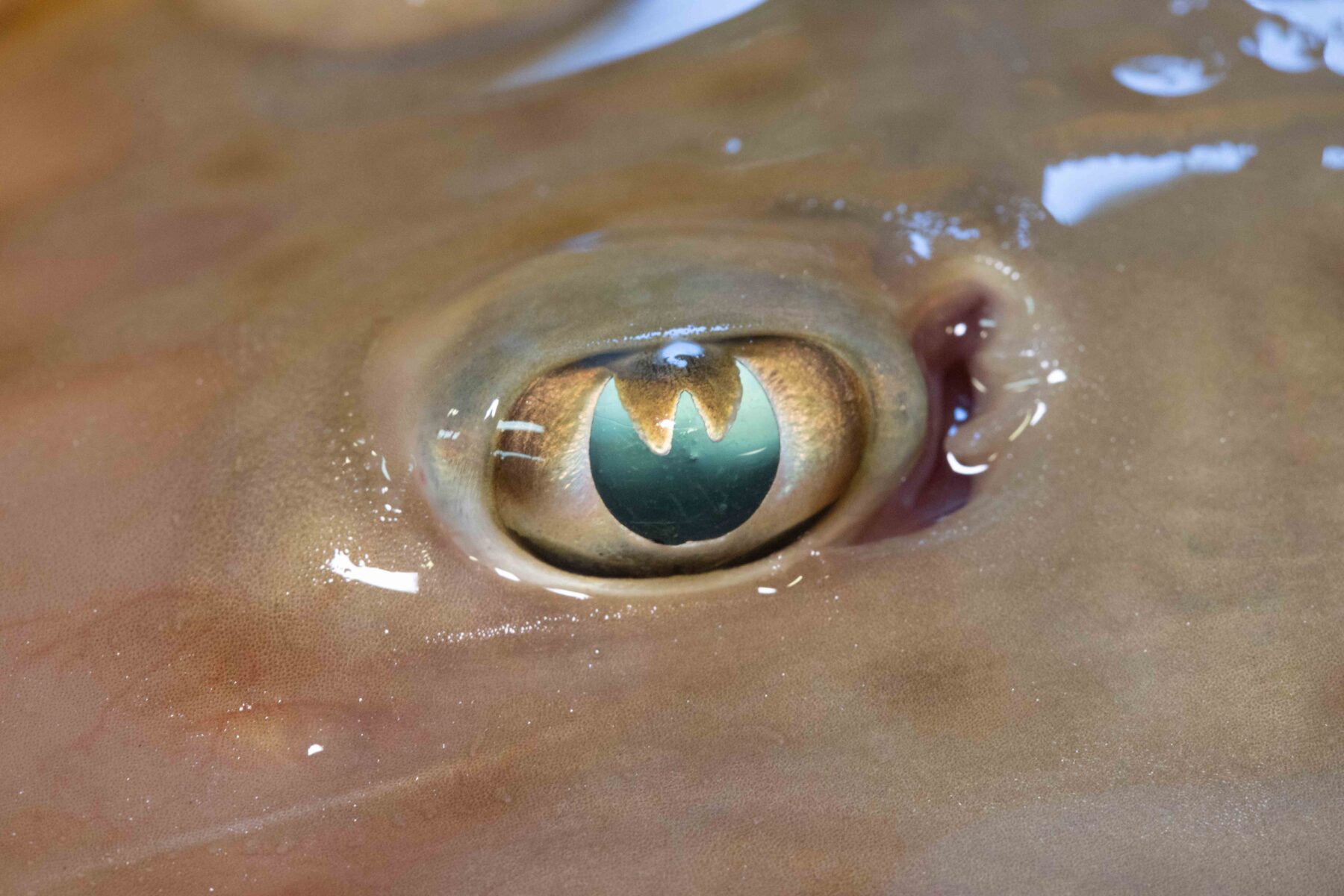
Only a small fraction of the zoological treasure trove collected on the voyage could be examined immediately at sea. Most of the work to sort, label and identify exactly what has been brought back from the depths of the Gascoyne has only just begun and will continue for years to come.
